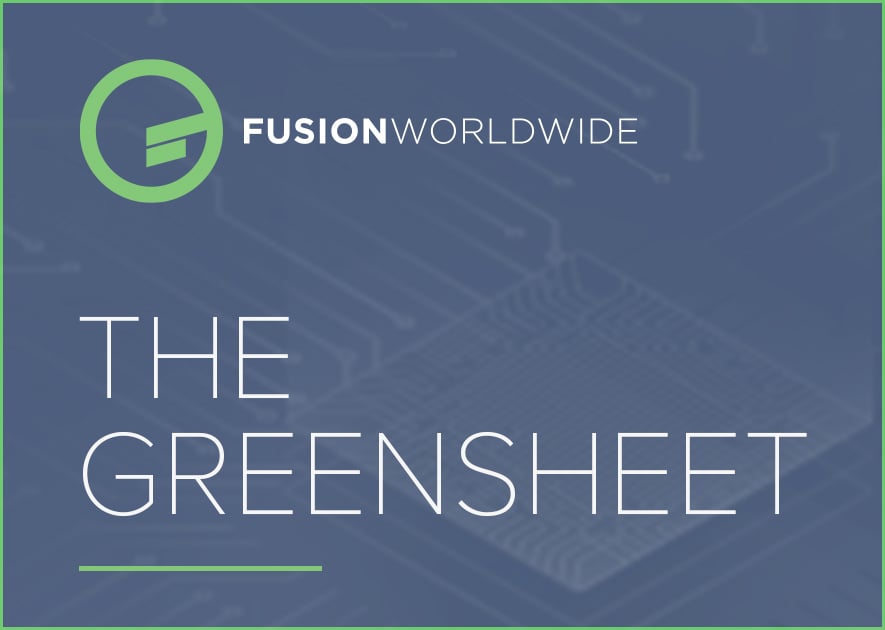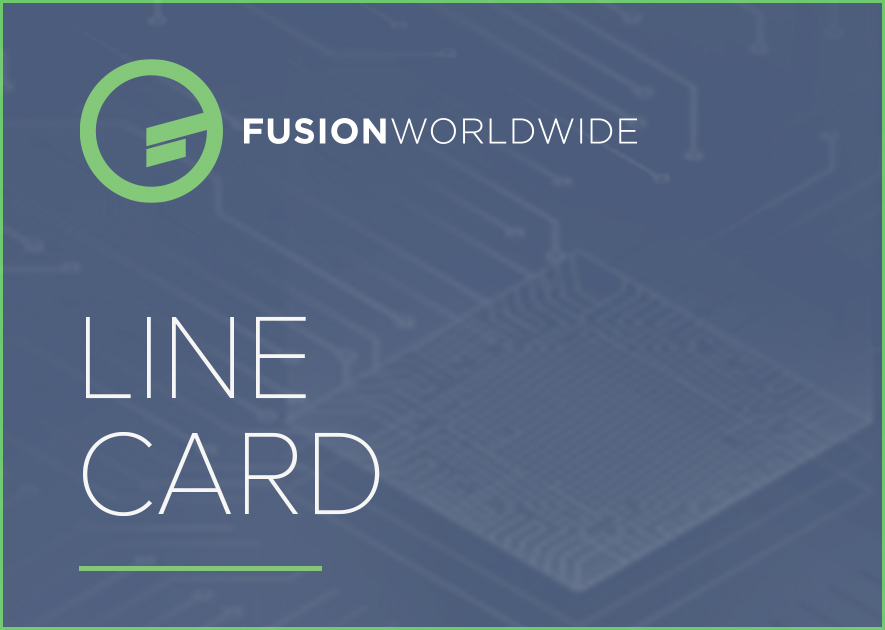Last Updated 1/22/2024
The Industry Insider is a bi-weekly collection of direct input from Fusion suppliers and customers on what they see and hear related to changes in the supply/demand balance across the electronics industry.
See the latest updates below in bold.
For more market intelligence, check out our quarterly analysis of manufacturer earnings reports here.
|
Manufacturers |
Affected Product |
Market Trend |
|
All |
AI’s influence is leading a new innovation cycle within the data center industry. Companies are reportedly exploring liquid cooling instead of traditional air cooling. Water cooling is reportedly preferred for high-performance computing due to its superior heat transfer capabilities. |
|
|
All |
The U.S. announced plans to support Microchip technology by providing $162M to help increase production of semiconductors. This should ensure more secure continuity of supply for numerous verticals, including the consumer, automotive, healthcare, aerospace, and defense industries. |
|
|
All |
DDR4 |
Demand is rising for 32GB 3200 D4 RDIMM as customers look to expand inventories of these products, as well as 64GB 3200 D4 RDIMM. Both the 32GB and 64GB are experiencing constrained supply as prices have trended upwards since the end of 2023. An additional cost adjustment is expected in the near future, and may be between 15% – 25%. |
|
All |
GPU |
The U.S. has delayed re-imposing tariffs on Chinese goods until May. This has helped to stabilize graphics cards pricing but that is subject to change once the tariffs go into place. Read more here. |
|
All |
HDD |
Customers have confirmed that pricing for HDDs continues to increase. Costs for 20TB HDDs have reportedly risen 20% within European markets. |
|
All Murata
|
The Japanese semiconductor industry is beginning to feel the aftershocks of an earthquake that occurred on January 1st. Murata, a leading capacitor manufacturer, has numerous factories and a subsidiary company in the affected region. While they are still assessing the impact of the damage, reports indicate that the factory that may have been impacted is a major producer of MLCCs. For a more detailed list of impacted operations, read Fusion’s latest blog here. |
|
|
All |
DDR4 DDR5 SSD |
Memory price increases are steadily outpacing SSDs. On average, SSD pricing went up 20% in Q4 and is expected to increase an additional 30% in Q1. However, demand has stayed flat. |
|
AMD |
Integrated Circuits |
Declining run-rate and supplier sustainability concerns have pushed AMD/Xilinx to discontinue the following products:
All parts have no direct replacements. |
|
Analog Devices |
|
Prices will reportedly increase by 10% - 20 % in February. Parts between 20 and 25 years old will see prices rise 10%. Parts between 25 and 30 years old will see prices rise 15%, and costs for parts over 30 years old will increase 20%. |
|
Hitachi |
|
According to market intelligence reports, the factories affected by the Ishikawa earthquake are mainly automotive and specific parts manufacturing locations. The impact on general products is minimal. |
|
Intel |
GPU |
Intel updated its list of products impacted by the B.I.S. regulations. The following products will be effected:
|
|
Intel |
Notebook CPU |
The Meteor Lake series officially launched in mid-December and boasts 33% faster integrated graphics. Read more about the latest from Intel here. |
|
Intel |
Server CPU |
Pricing and demand remain high for the Cascade Lake and Ice Lake series. With these products going EOL supply is reducing and most vendors are unwilling to take lead time orders due to concerns over last minute decommitments. Intel plans to release updated pricing on January 5th. |
|
Kioxia |
SSD |
SSD demand has surged, and Kioxia is signaling that the company may be unable to support certain SKUs until Q2 2024 due to limited supply. |
|
KOA |
Resistor |
The earthquake has impacted KOA’s factory in Japan. The SL1 series of resistors has been affected. |
|
Lattice |
|
Lattice will issue a price increase of around 7.5%, effective January 29th. Customer shipments on or after the 29th will be subject to the increase. |
|
Micron |
Memory Modules |
Supply of memory modules is reportedly constrained as customers report trying to place orders and receiving no firm estimated commit dates. |
|
Murata |
Chip Inductor |
Distributors have stated that the earthquake's impact will likely increase lead times. However, the company is still assessing the full extent of the damages. Reports indicate that the following series have been impacted:
Read more here. |
|
Nvidia |
GPU |
Lead times for Nvidia’s Jetson modules are extending. Customers have reported three-month lead times with forecasts. Customers who do not provide forecast are looking at six-month lead times. Some customer's delivery schedules for the A6000 have been delayed until April. This came after Nvidia reduced production for the A6000, which caused shortages for the A40 and A10. However, delivery schedules are reportedly stable for the A4000, 4000 ADA, and A5000. |
| Samsung |
DIMM |
DIMM prices are expected to increase by as much as 50% this year as Samsung hopes to recover losses from last year’s reduced memory demand. |
| Samsung |
DRAM eMMC |
Samsung has issued an EOL notice for certain consumer DRAM products. The last time buy date is June 2025, and long-term support will be available through December 2025. Impacted products include:
Samsung also recently announced the following price increases:
Supply remains constrained for these components as customers report being unable to receive parts. |
|
Samsung |
Integrated Circuits |
Market intelligence reports indicate that Samsung may increase prices by 10% - 15 % in Q1. They have yet to send out a formal notice. |
|
Samsung |
SSD |
Following Samsung’s Q4 strategies to decrease capacity, and therefore inventory, of memory components, prices have increased 30% - 40% as demand trends start to improve. While the official pricing list has yet to be released, reports indicate that SSD costs may increase by 25% compared to last month. |
|
Samsung SK Hynix |
GDDR5 HBM |
Forecasts indicate that GDDR5 8G and GDDR6 16G will experience shortages this year as allocation is already constrained. Samsung prices have increased by 20% for the 16G. Lead times are reportedly unavailable for SK Hynix’s HBM series. |
|
Samsung Nvidia
|
DDR4 DDR5 HBM
|
Samsung has entered a strategic agreement with Nvidia to support all their HBM memory. This will have a downstream effect for numerous customers, especially those sourcing DDR4 and DDR5. The impact stems from the fact that memory manufacturers will need to pivot fab capacity to HBM production, which will reduce support for DDR5 and DDR5. DDR4 will bear the brunt of this shift, as this series is particularly popular and used across various projects. |
|
Sanken |
|
Customers are considering alternative MPNs as Sanken production may be dealing with the impact of the Ishikawa earthquake for some time. Sanken manufactures transistors and diodes. ICs are not made at the factory damaged by the earthquake, but the company is still confirming the continuity of supply with the partners to whom they outsource production. |
|
Seagate |
HDD |
Seagate instituted a price increase for large-capacity HDDs in early January. Costs for the 16T, 18T, and 20T have increased by 5% - 10%. 12T HDD supply is currently short, and customers have been reaching out to Seagate for updates on order backlogs, but the company has so far been unable to confirm commit dates. Seagate is working to correct supply and demand imbalance by cutting production for other components to allocate manufacturing support to large capacity models. |
|
Solidigm |
SSD |
Solidigm will not be offering any special pricing agreements or approvals during Q1. The P5510 and P5520 have already increased by 25% - 35% since last quarter and current pricing is unstable. Currently, there are reports that customers have a backlog of orders built up, mainly the S4520 series. Solidigm has yet to release Q1 pricing for SSDs. Lead times are over six weeks. Prices for the S4520 and P5520 are already rising, and allocation is limited. |
|
SK Hynix |
DRAM NAND |
Market intelligence reports indicate that SK Hynix may increase production of DRAM as all NAND production has been pushed back slightly. This is likely in preparation to save both budget and manpower to support an uptick in DRAM manufacturing. |
|
Toshiba |
|
Toshiba's efforts to recover from the Japan earthquake effectively limited the extent of the damage. Per Toshiba's president, the company planned to resume production on some lines by January 10th. Toshiba parts are expected to be delayed by 15 weeks. However, the TLP series is one area of concern for customers, as the earthquake has reportedly affected it. |
|
Western Digital |
HDD |
HDDs are experiencing an uptick in market activity, especially the 1TB and 3.5” HDDs. Supply is currently constrained due to a shortage of materials necessary for production and cuts to capacity. Manufacturing will focus support on higher capacity products, but will still need to navigate the SOC and IC material shortages that have collided with customers under forecasting. |
Sign up here to get the Industry Insider delivered to your inbox every week.
The Greensheet
Our monthly market intelligence report on a variety of component sectors, delivered to your inbox.
Market Snapshots
A look at the major price, demand and lead time changes happening in the electronic components industry and market.
Line Card
When it comes to component sourcing, we deliver using our global network of suppliers that we fully vet and constantly monitor.




